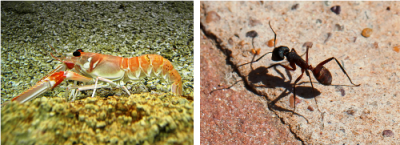Oct 7 2015
Researchers from the CBGP (UPM-INIA) have developed a method to obtain a clean organic fertilizer that is able to regenerate degraded soil caused by overharvesting.

Using natural biodegradable biopolymers like organic fertilizers could be a sustainable alternative facing the common usage of inorganic nitrogen fertilizers that result harmful to the environment. This way, researchers from Universidad Politécnica de Madrid (UPM) in collaboration with University of Hamburg, have developed a method to obtain biocompounds made from the chitin of the exoskeletons of crustaceans and insects, its usage in plant cultivations has proved to be more efficient.
This compound is biodegradable, insoluble and harmless to human health, it does not pollute the environment and it can be used in lower amount than other compounds since it does not disappear by evaporation or leaching. This compound is able to recover the biodiversity of the soil after suffering overharvesting. Besides, its cost can be up to 10% cheaper than other organic fertilizer, what it means an additional advantage for its future usage.
The nitrogen fertilizers traditionally used in agriculture have polluting effects both in water and in the atmosphere, this can degrade soils and contribute to global warming. Thus, food industry demands more efficient organic fertilizers which are respectful to the environment.
In order to solve this problem, a group of researchers from the Centre for Plant Biotechnology and Genomics (UPM-INIA), led by Dr. Marta Berrocal in collaboration with German researchers from the University of Hamburg, have developed a technology to produce a biodegradable material made from the chitin of the exoskeletons of crustaceans and insects.
This material has been tested as a fertilizer and has proven to stimulate the growth of several plant species, both forestry and herbaceous, increasing up to the 10% its total content of nitrogen and carbon as well as an increase of its roots.
All the mentioned characteristics of this material, its easy method of production and its low price compared to the traditional fertilizers make this new material a sustainable alternative with an easy market deployment in the area of agricultural fertilization.